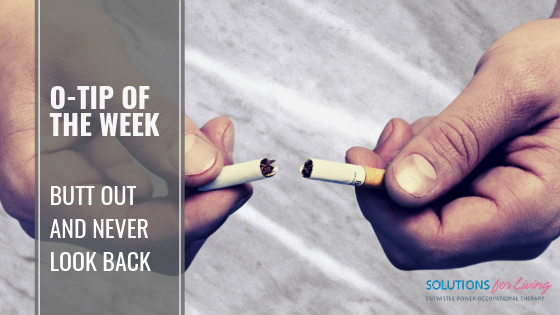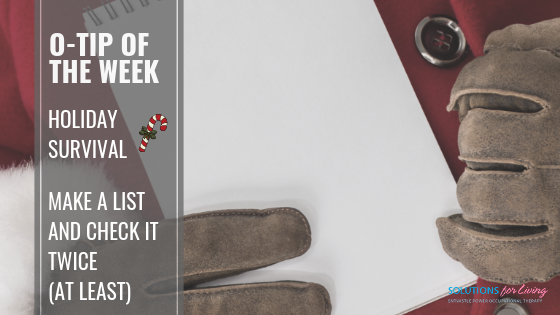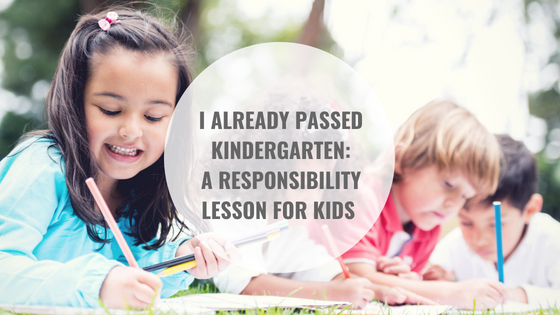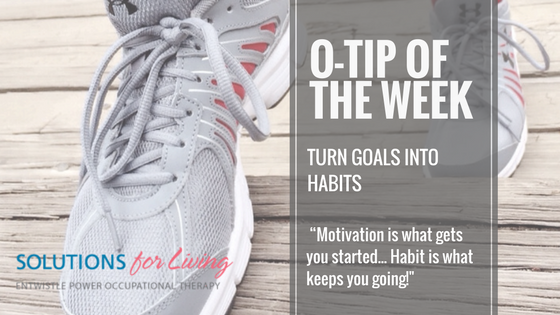Julie Entwistle, MBA, BHSc (OT), BSc (Health / Gerontology)
Tis the season for me to carefully balance my dislike for the Holiday season with my desire to not bring those around me down with my “baa-hum-bug” attitude. My hate-on for Christmas started in my late 20’s probably around the time I had four kids under age 5 and through some lack of communication among my family, my kids had like 15 presents to unwrap EACH. No, I am not complaining that my kids have access to such “abundance” by some very loving and well-meaning people, but with this display of affection comes a parent’s concern that their child will love Christmas because of the stuff. And the more stuff they get, the more they want. The more they want, the more they miss the point on the difference between want and need and the more they expect the “bar” to be raised with each passing year.
So, in my search to not pass on my “hate-on for the holidays” gene to my children, I landed on charity and acts of service to balance the fact that they, like most of their friends, live in abundance but still need to be mindful and grateful that they get a lot of what they want, while “needing” nothing. After all, most of us can give something and there are so many options for this. This new approach has been helping me to beat the Holiday Blues for the last few years. It helps me to slow down, reflect, and be mindful and grateful for the things I have and can provide others, and for the pleasures of my own life.
But in stepping out and getting my girls involved in local charities over the holidays, I have realized that there is an art to “giving” that can have the most impact.
Here are my Top 5 Things to Consider when Giving Back This Holiday Season:
Donate Money – good and responsible charities are appreciative of every dollar. From the Salvation Army Bell Ringers to putting in a payment online or in the mail. Money does help. Search online with your kids to find a charity close to your heart, and have every member of the family donate.
Donate Items – some charities collect food, clothing, toys, or housewares to provide to those in need. Time to purge those things you don’t need or use. But before you donate items, ASK the charity what they need and HOW they want the items provided. If they want new toys, these need to be packaged and un-used. If they want them unwrapped then don’t take the time to wrap them – it only adds cost and time for you, and cost and time for the charity to unwrap the item before distributing. Also, ASK what age groups they have a hard time providing for. I was volunteering at the Good Shepherd recently and they had an abundance of items for small children, but very few for teens. If you ask them, they will tell you the age categories they struggle to provide for. Lastly, be sensitive. If the charity is serving refugees or people immigrating from war-torn countries, toys that involve violence or war (i.e. guns or tanks) might not be appropriate and will need to be screened out by the charity before providing it to the recipient, again adding time and administration during a busy season.
Purchase Charity Goods – some charities sell “goods” that provide an item with a donation. World Wildlife Federation sells small stuffed animals to represent an “endangered species” and most of the cost of the animal goes to the charity. So, for $40.00 my child gets an “endangered stuffie” with a certificate about the animal they have adopted, and the charity gets $32.00 as a donation to their cause. This is also true of other charities that aim to sell farm animals or agriculture supplies that are provided to third world countries.
Support Events – many charities offer dinners, auctions, or other seasonal events to raise money. This is a great way to donate while engaging in an “experience” with a friend, partner or as a family.
Donate Time – sometimes donating your time reaps the best reward for you and the charity. Not only does it provide you with an opportunity to see how the organization operates and allow you to be “hands on” in making a difference, it saves the charity from needing to fund staffing to manage the busy holiday season. I have been at the Good Shepherd three times this month doing anything from sorting clothing donations, food donations, stocking housewares on the shelves in their store, and sorting toys for their Christmas hampers. There are many organizations that just need some extra hands during the holiday season and sometimes our time is our most impactful gift.
Next week on our blog we begin our annual tradition of giving back to our readers with the 12 Days of Inspiration. We hope you find these uplifting stories a source of inspiration and hope this Holiday Season.
Previously Posted December 2016













